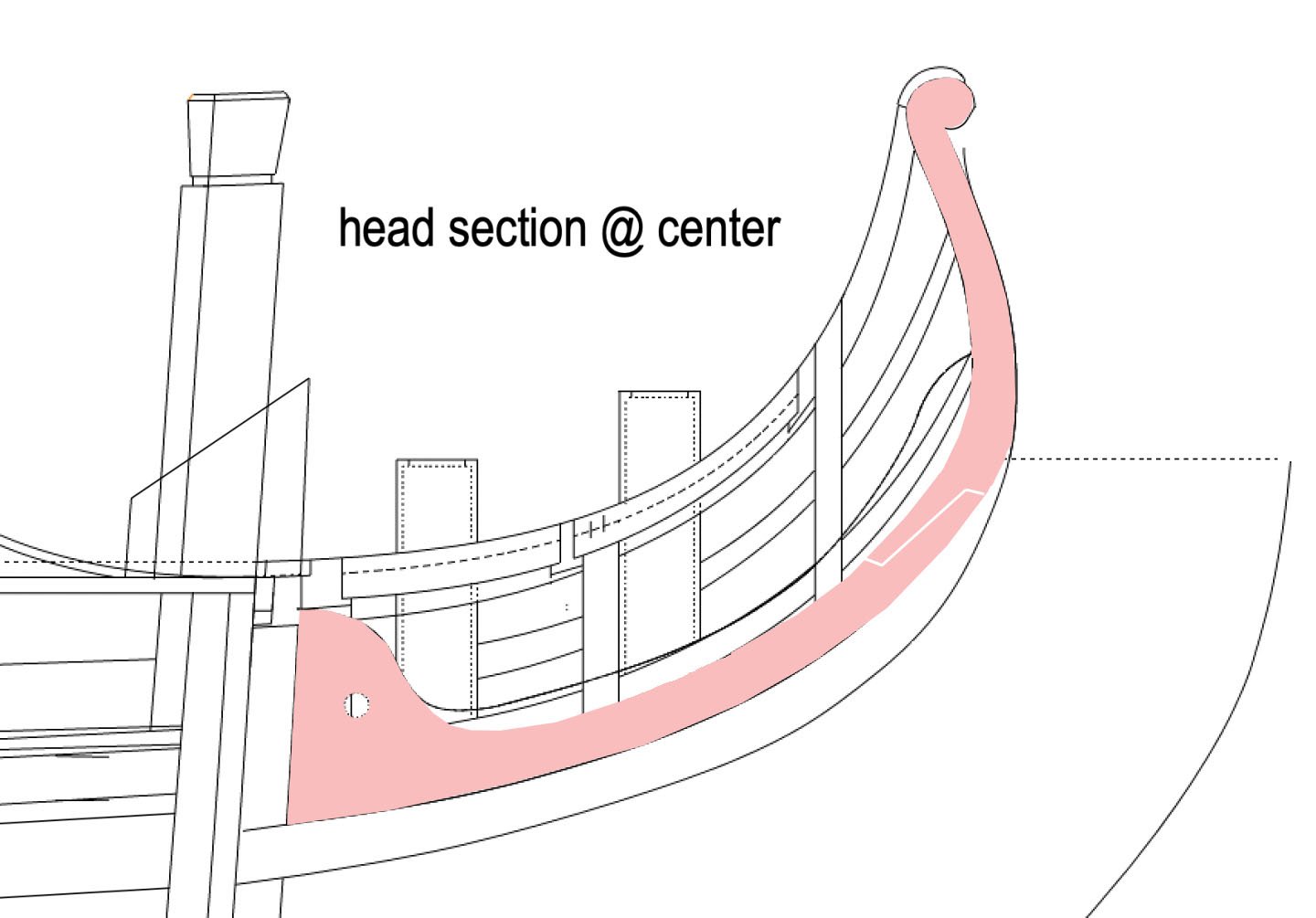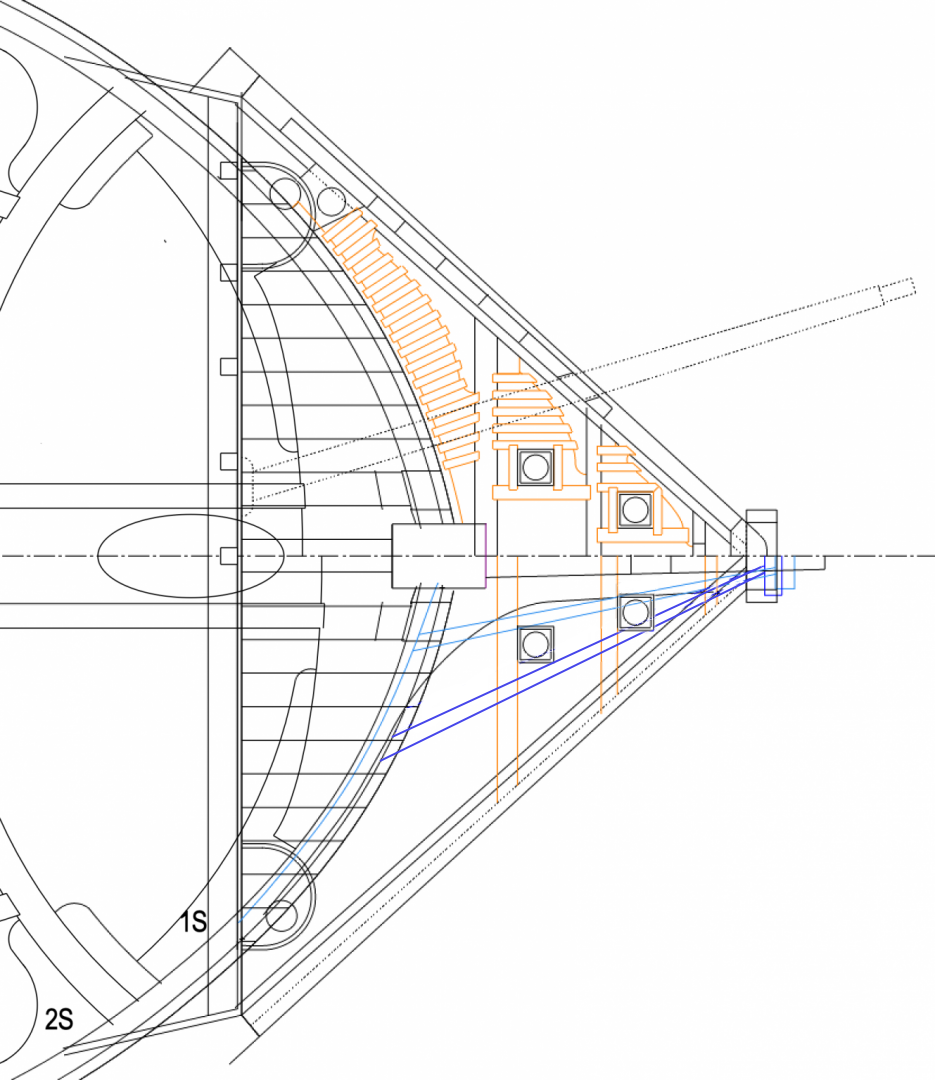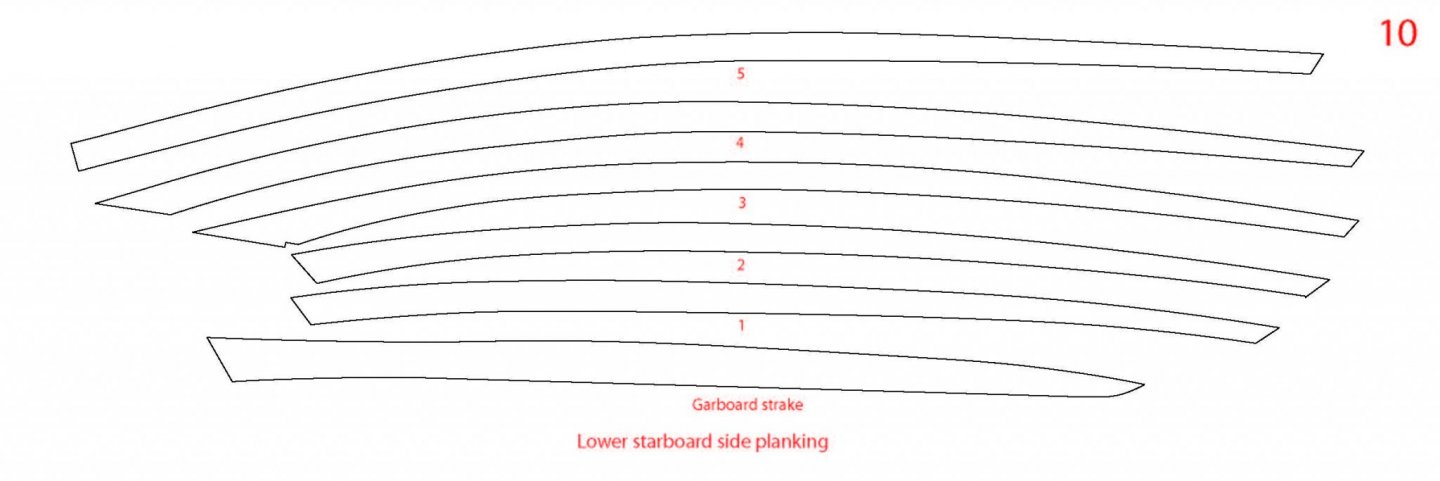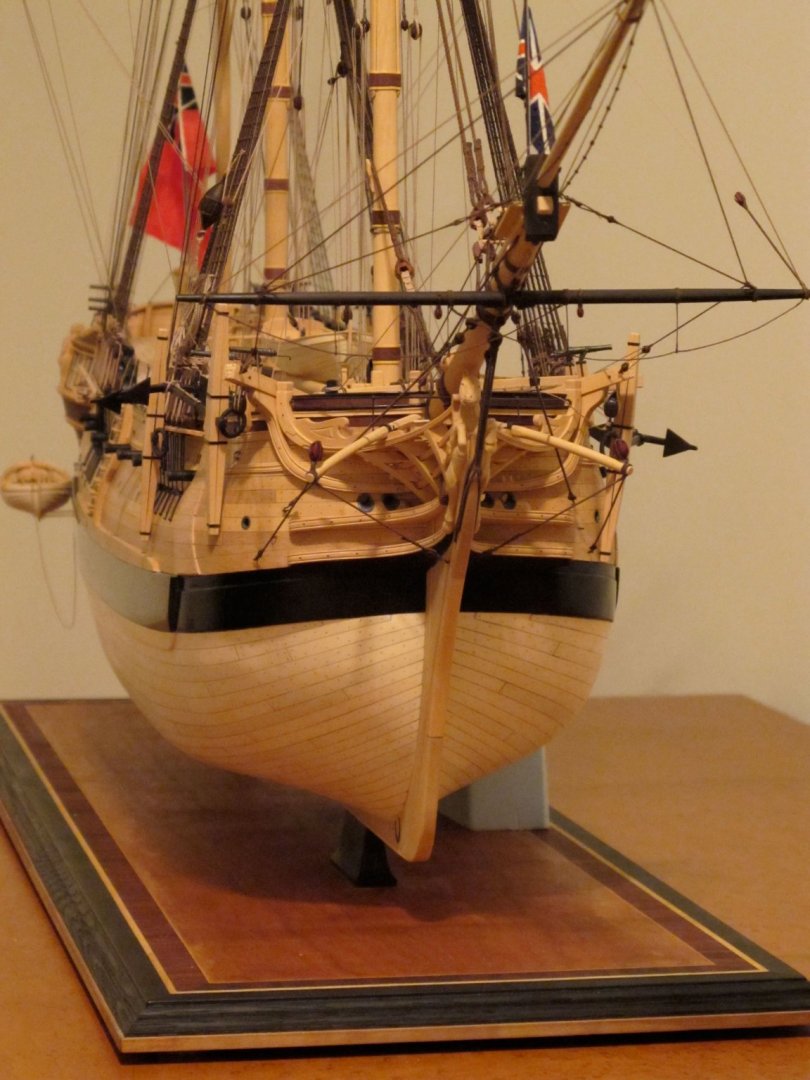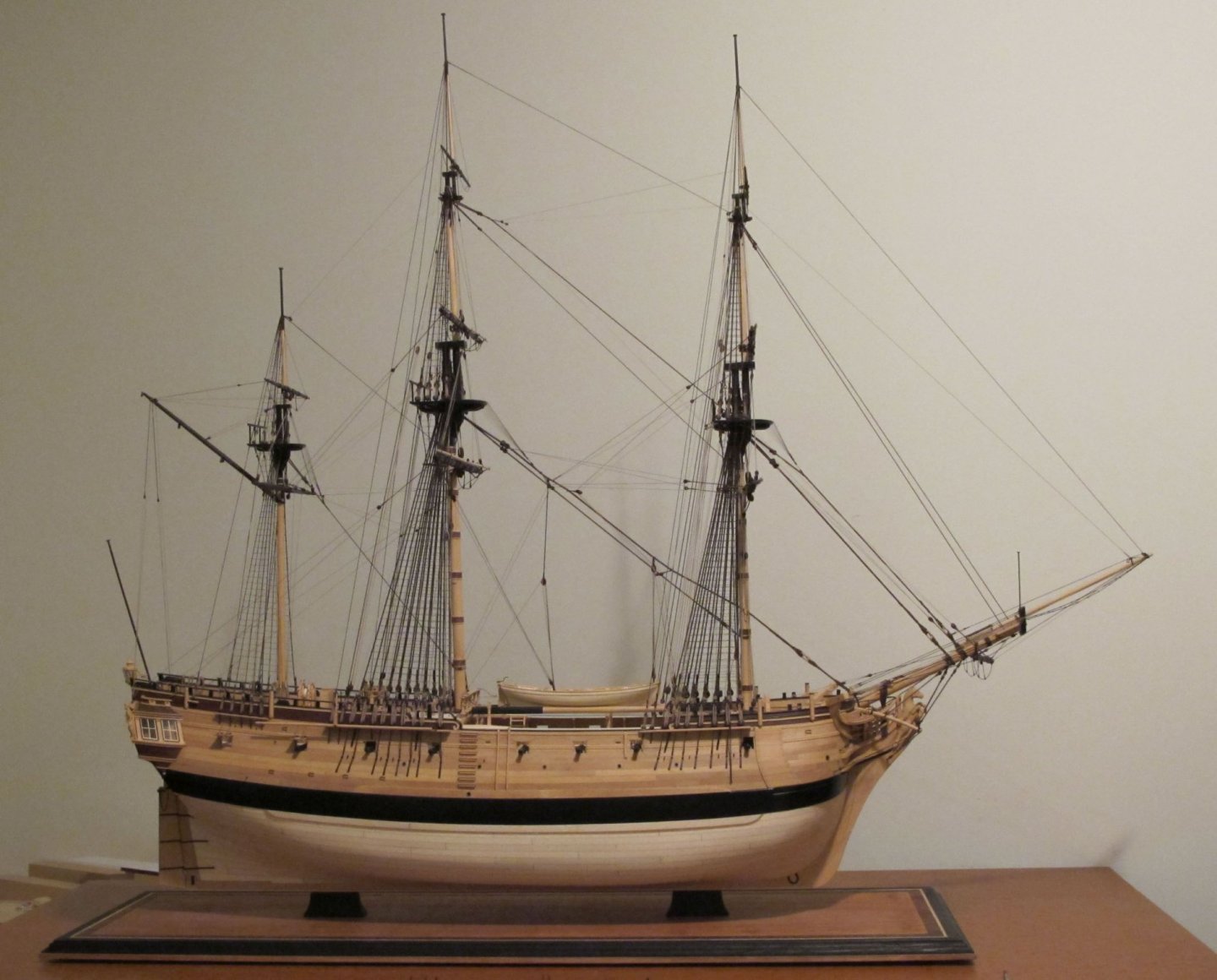-
Posts
13,361 -
Joined
-
Last visited
Content Type
Profiles
Forums
Gallery
Events
Everything posted by druxey
-
The extension to the standard does run up in a similar curve to the lower rail. It extends right up to the top of the hair bracket scroll. Behind the figure there are three solid layers; the two hair brackets on the outside sandwiching the extension piece. See my sketch superimposed on your drawing as an approximation.
-
Mark: interesting comments. I interpret the pen and ink picture as a transitional stern, where the round tuck was still being figured out by the shipwrights. I can see that the Lely is ambiguous; as first glance it appears to be a square tuck, but on closer examination it seems to also be transitional like the drawing - especially on the port side.
-
If you are an experienced carver (and from your description, you are) I can see where you are coming from. Letting your subconscious work on a problem and the ability to visualize are not talents most of us have. For lesser mortals....
- 2,699 replies
-
- heller
- soleil royal
-
(and 9 more)
Tagged with:
-
You are a braver man than I, Hubac. I always carve the head and face first, not last. That way, should I mess up, I haven't wasted time and effort of the rest of the piece. So far, your twins are looking very good.
- 2,699 replies
-
- heller
- soleil royal
-
(and 9 more)
Tagged with:
-
I have seen sheer poles on a contemporary model of 1752, so they were introduced much earlier than Lees suggests. In this case, the shroud sheer pole is more of a rack as it actually carries belaying pins. See: https://collections.rmg.co.uk/collections/objects/66296.html
-

HMS Sphynx by TBlack - 1:64
druxey replied to TBlack's topic in - Build logs for subjects built 1751 - 1800
Looking good, Tom. Glad the book is working for you. -
"Fascinating, complex geometry" you say? Just wait until you get to the head timber geometry - your head will spin! The notches for the head rails get progressively angled as you go forward. It's a challenge. The aft end of the lower rail may need to be a moved little more toward the centerline? Would that solve the discharge tube issue (pun intended)?
-

What is "flat-floored, apple-cheeked hull"
druxey replied to RussR's topic in Nautical/Naval History
-
Looking very nice, Ben. We know nothing about Beam 7.
- 889 replies
-

Converting a Backyard Shed into a Model Workshop
druxey replied to Hank's topic in Modeling tools and Workshop Equipment
If you go the chessboard route, I can guarantee that any light colored pieces you drop will land on white, and any dark pieces will land on - yes, you've guessed it! -
This has a ZAZ number in the corner, so is part of the Royal Museums Greenwich collection. I don't know whether there are copyright concerns involved here. However, it is a nice illustration.
-
Your fairing of the bulkheads looks good. If you look at planking articles on this site, you'll see that planks usually have to be shaped to fit properly. Straight planks are only good for siding a flat surface like a house. You will either need to cut curved planks or edge bend straight ones. (There are tutorials on MSW on both methods.) Then your planks will lie flat.
-

contact adhesive
druxey replied to Liad's topic in Building, Framing, Planking and plating a ships hull and deck
Avoid contact cement if at all possible! Another thread just mentioned planks springing loose later on....
About us
Modelshipworld - Advancing Ship Modeling through Research
SSL Secured
Your security is important for us so this Website is SSL-Secured
NRG Mailing Address
Nautical Research Guild
237 South Lincoln Street
Westmont IL, 60559-1917
Model Ship World ® and the MSW logo are Registered Trademarks, and belong to the Nautical Research Guild (United States Patent and Trademark Office: No. 6,929,264 & No. 6,929,274, registered Dec. 20, 2022)
Helpful Links
About the NRG
If you enjoy building ship models that are historically accurate as well as beautiful, then The Nautical Research Guild (NRG) is just right for you.
The Guild is a non-profit educational organization whose mission is to “Advance Ship Modeling Through Research”. We provide support to our members in their efforts to raise the quality of their model ships.
The Nautical Research Guild has published our world-renowned quarterly magazine, The Nautical Research Journal, since 1955. The pages of the Journal are full of articles by accomplished ship modelers who show you how they create those exquisite details on their models, and by maritime historians who show you the correct details to build. The Journal is available in both print and digital editions. Go to the NRG web site (www.thenrg.org) to download a complimentary digital copy of the Journal. The NRG also publishes plan sets, books and compilations of back issues of the Journal and the former Ships in Scale and Model Ship Builder magazines.



